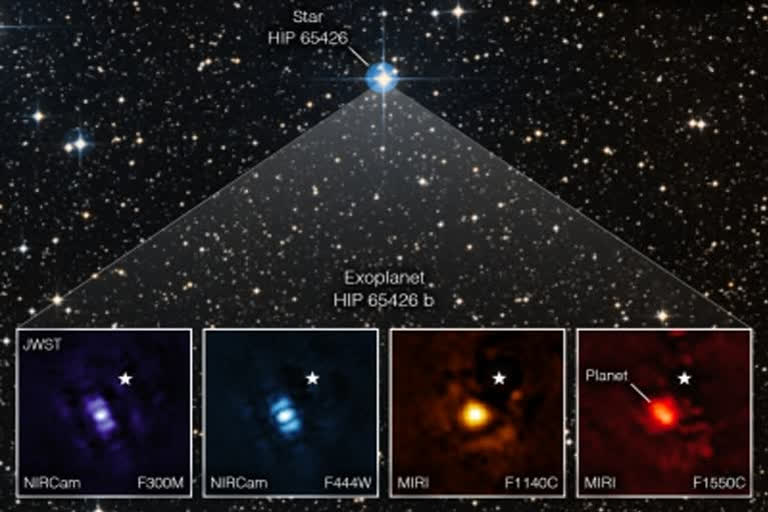New York: For the first time, astronomers have used NASA's James Webb Space Telescope to take a direct image of a planet outside our solar system. The exoplanet called 'HIP 65426 b' is a gas giant, meaning it has no rocky surface and could not be habitable. The exoplanet is about six to 12 times the mass of Jupiter, and these observations could help narrow that down even further. It is young, about 15 to 20 million years old, compared to our 4.5-billion-year-old Earth.
"This is a transformative moment, not only for Webb but also for astronomy generally," said Sasha Hinkley, Associate Professor of Physics and Astronomy at the University of Exeter in the UK. The image, as seen through four different light filters, shows how Webb's powerful infrared gaze can easily capture worlds beyond our solar system, pointing the way to future observations that will reveal more information than ever before about exoplanets, the space agency said in a statement. This image shows the exoplanet 'HIP 65426 b' in different bands of infrared light. A set of masks within each instrument, called a coronagraph, blocks out the host star's light so that the planet can be seen.
Astronomers discovered the planet in 2017 using the SPHERE instrument on the European Southern Observatory's Very Large Telescope in Chile and took images of it using short infrared wavelengths of light. Webb's view, at longer infrared wavelengths, reveals new details that ground-based telescopes would not be able to detect because of the intrinsic infrared glow of Earth's atmosphere.
